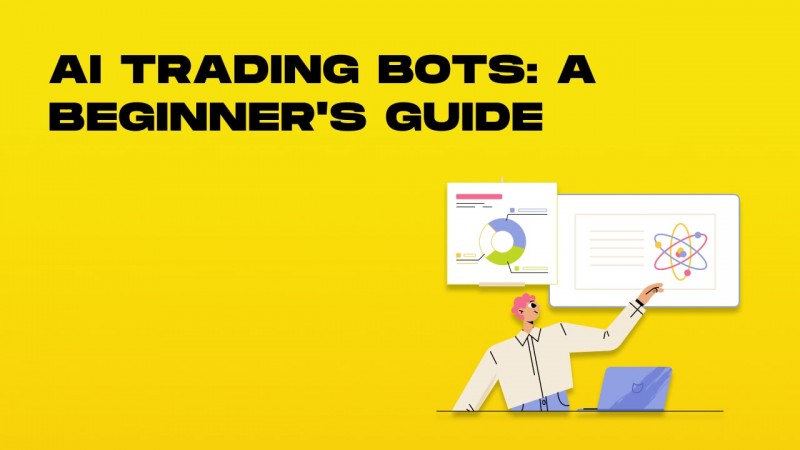20 Top Reasons For Choosing AI Stock Investing Analysis Websites
20 Top Reasons For Choosing AI Stock Investing Analysis Websites
Blog Article
Top 10 Tips On Assessing The User Interface And Experience Of Ai Stock Predicting Trading Platforms
The User Interface and the User Experience of AI trading platforms that use analysis and prediction of stocks are crucial to ensuring usability and efficiency. They also impact the overall satisfaction. Poorly designed interfaces can affect decision-making, even when the base AI models are reliable. Here are 10 top tips for evaluating the UI/UX.
1. The user's ease of use as well as the intuitiveness of the product are evaluated
Navigation: Make sure the platform is easy to use, using buttons and menus that are easy to understand, as well as workflows.
Learning curve: Evaluate the speed at which a new user is able to understand and use your platform, with no extensive instruction.
Verify the same design patterns across platforms (e.g. buttons and color schemes, etc.).).
2. Look for Customizability
Dashboard customization: Check whether the dashboard can be personalized to show relevant metrics charts, data, or charts.
Layout flexibility: Make sure that your platform is able to allow users the ability to rearrange or resize widgets and charts.
Themes: Find out if your platform has dark/light mode or any other visual preferences.
3. Examine Data Visualization
Chart quality: Ensure the platform is high-quality and offers interactive charts (e.g., line charts, candlestick charts) with pan and zoom capabilities.
Visual clarity: Check that the data is presented clearly and is labeled appropriately as well as legends and tooltips.
Real-time updates: Verify if visualizations update in real-time to reflect market trends.
4. Test Speed and Responsiveness
Time to load: Ensure that the platform loads fast even when you're dealing with large data sets.
Real-time Performance: Determine whether your platform is able to handle data feeds with no delays.
Cross-device Compatibility: Verify whether the platform works seamlessly with different devices (desktops or smartphones).
5. Examine accessibility
Mobile app availability: Find out whether the platform has a mobile app with complete functionality to trade on the go.
Keyboard shortcuts: Ensure the platform is able to support keyboard shortcuts for power users.
Accessibility features: Determine if the platform complies with accessibility standards (e.g. screen reader support or high-contrast mode).
6. Utilize the Search and filter Functions
Search performance: Ensure that the platform is able to allow users a quick search of stocks, indices or other assets.
Advanced filters - Find out whether users can apply filters, such as by sector, market cap or performance metrics, in order narrow down the results.
Saved searches: See whether you are able to save searches and filters which are often used.
7. Be sure to check for alerts and notifications
Customizable alarms: Ensure that users can set up notifications for specific situations.
Notifications delivery: Determine whether notifications can be sent via multiple channels (e.g. email, SMS and app notifications).
Timeliness - Check whether alerts are sent out quickly and accurately.
8. Evaluation of Integration with Other Tools
Integration of brokers is crucial to ensure smooth trade execution.
API access: Discover whether advanced users have access to the API to develop their own custom software or workflows.
Third-party integrations : Find out whether the platform supports integration with other tools, such as Excel Google Sheets or trading bots.
9. Assess the Help and Support Features
Onboarding Tutorials: Find out whether your platform has tutorials or guides for novice users.
Help center: Make sure the platform has a complete knowledge base or a help center.
Customer support: Find out whether the platform has an efficient customer support (e.g. live chat, email, phone).
10. Test for Overall User Satisfaction
User feedback: Research reviews and feedback to determine overall user satisfaction with the platform's UI/UX.
Trial period: You may make use of a demo or a no-cost trial to test the platform and assess its suitability.
What is the platform's approach to handling edge cases and mistakes?
Bonus Tips:
Aesthetics. It is crucial to have a functional layout however, a visually pleasing layout can improve the experience of users.
Performance under pressure - Test the platform's responsiveness and stability during conditions of high volatility in the market.
Find out if the platform offers an active user community in which users are able to exchange feedback and tips.
Following these tips can assist you in evaluating the UI/UX of an AI trading platforms that predict and analyze stocks, making sure they are user friendly efficient, effective and compatible with your needs in trading. A good UI/UX can be an extremely effective tool that can assist you in making more informed decisions and make better trades. Read the recommended full report for market ai for site advice including ai stock, options ai, trading ai, ai stock trading bot free, incite, ai for trading, ai for stock trading, investing ai, ai for trading, ai investing platform and more.
Top 10 Tips For Assessing The Scalability Ai Technology For Predicting And Analyzing Trading Platforms
Assessing the scalability of AI-driven trading and stock prediction platforms is crucial for ensuring they are able to handle growing data volumes, user demands as well as market complexity. Here are 10 top suggestions for evaluating the scaleability.
1. Evaluate Data Handling Capacity
Tip: Verify that the platform is able to process and analyze massive datasets.
Why: Scalable platforms must handle growing data volumes without performance degradation.
2. Test Real-Time Processing Capabilities
Test the platform to see how it handles data streams in real-time like breaking news or stock price updates.
Reason: Delays in trading decisions can result in missed opportunities.
3. Check the Cloud Infrastructure for Elasticity
TIP: Check whether the platform is cloud-based infrastructure (e.g., AWS, Google Cloud, Azure) and has the ability to scale resources in a dynamic manner.
The reason: Cloud platforms are flexible, and are able to be scalable up or down according to requirements.
4. Algorithm Efficiency
Tips: Find out the effectiveness of AI models that are employed to predict (e.g. Deep Learning, Reinforcement Learning).
Reason: Complex algorithms can become resource-intensive, so optimizing them is essential for scalability.
5. Examine parallel processing and distributed computing
Make sure that your platform is using the concept of distributed computing or parallel processing (e.g. Apache Spark, Hadoop).
What is the reason? They can help speed data processing across several nodes.
Examine API Integration & Interoperability
Tip : Make sure your platform integrates with other APIs like brokers and market data providers. APIs.
What's the reason? Seamless Integration makes sure that the platform can easily adapt to changes in data sources, trading environment and other elements.
7. Analyze User Load Handling
Tip: Simulate large user traffic to see how the platform does under pressure.
Why: Scalable platforms should offer the same level of performance regardless of the number of users.
8. Review the Retraining Model and its adaptability
Tips: Find out how frequently and how effectively AI models are trained with new data.
Why: Models must constantly adjust to changing markets to ensure that they remain precise.
9. Check for Fault tolerance and redundancy
TIP: Make sure the platform includes failover mechanisms and redundant systems in the event of software or hardware malfunctions.
The reason trading can be costly, so scaling and fault tolerance are vital.
10. Monitor Cost Efficiency
Tips: Calculate the cost of expanding your platform. Incorporate cloud resources, storage for data and computational power.
Why is it important to maintain a healthy balance between expenditures and costs for performance.
Bonus Tip - Future-proofing
Making sure that the platform can be able to accommodate emerging technologies (e.g. advanced NLP, quantum computing) as well as regulatory changes.
These elements can assist you in assessing the scaleability of AI-powered stock prediction as well as trading platforms. They'll also make sure they're robust, efficient, ready for expansion, and are future-proof. View the top rated moved here for chart ai trading for website info including best ai stocks to buy now, investing with ai, best ai penny stocks, can ai predict stock market, stock predictor, best ai stock prediction, ai for trading stocks, best ai stocks, ai stock investing, chart ai trading and more.